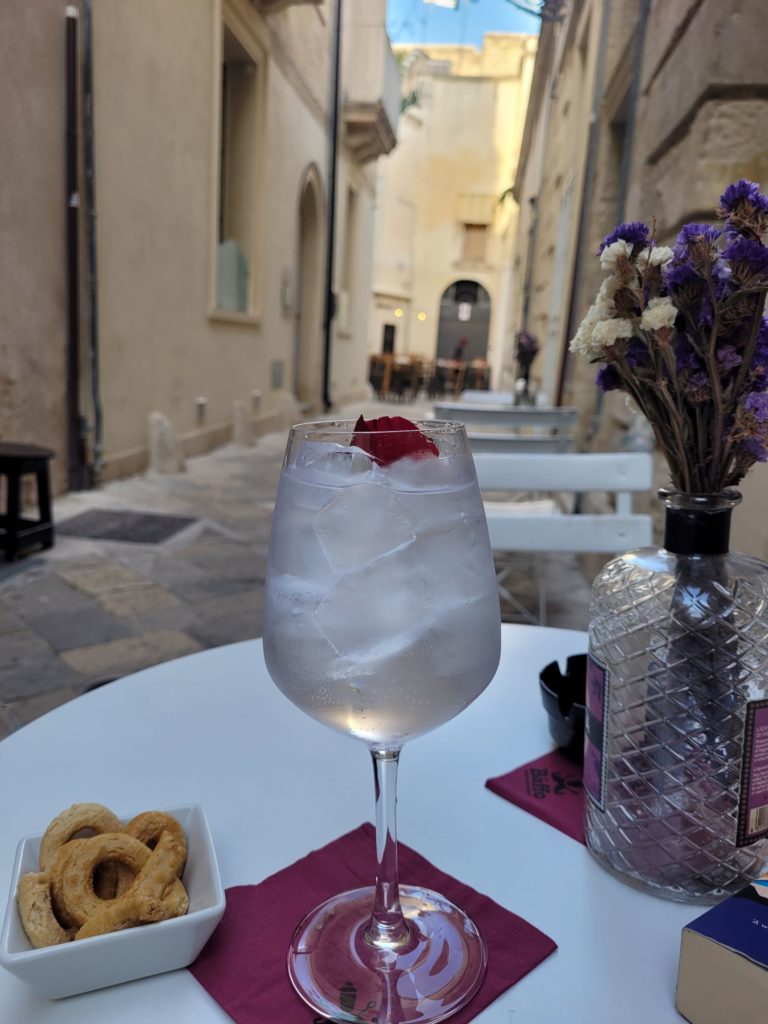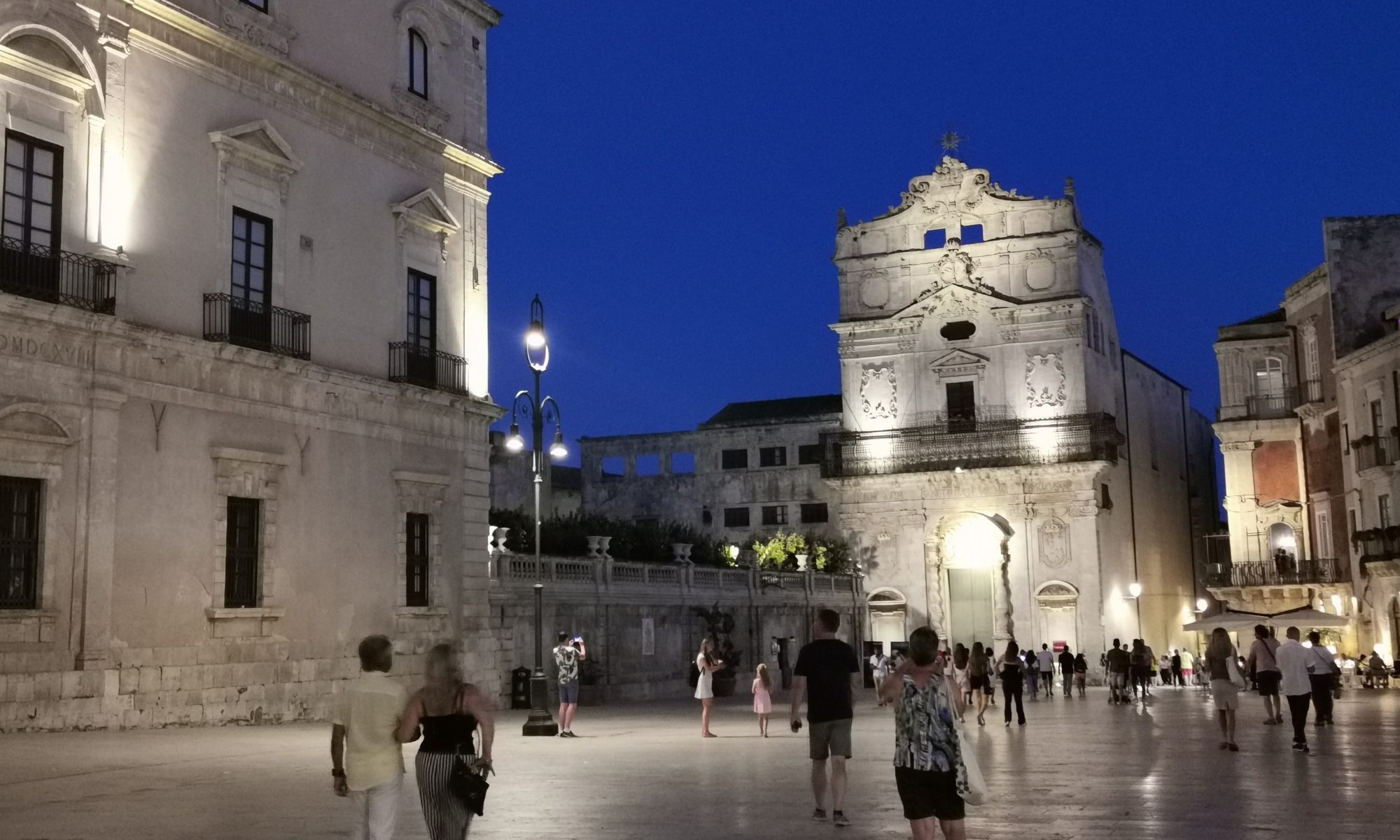I don’t normally travel in September. I’m more of a June girl which for me is the perfect month to get away. It’s not too hot, all the little darlings are safely in school, and you can get a head start on a really smug tan. It’s like the opening act to the summer and everyone is still pleased to see you.
This year, however, is different as I’ve spent it enslaved to a dissertation that needed submitting by 12 September. For this reason, I’m selfishly grateful the weather has been lousy this year, meaning no FOMO and no sitting behind closed blinds in a state of sweaty disarray trying to think of clever things to say. Instead, I’m getting to enjoy the final curtain of the season, which on the plus side means a bearable climate and no kids, but on the downside, guarantees tetchy service from exhausted waiters.
I’d originally organised a solo trip to Puglia to mark the end of my Masters but am being joined for the first five days by Chris, the best compass, translator and companion you can have. I fly into Bari, he comes cross country by train from Rome and somehow, miraculously, we manage to time our arrival at Bari Centrale station within minutes of each other.
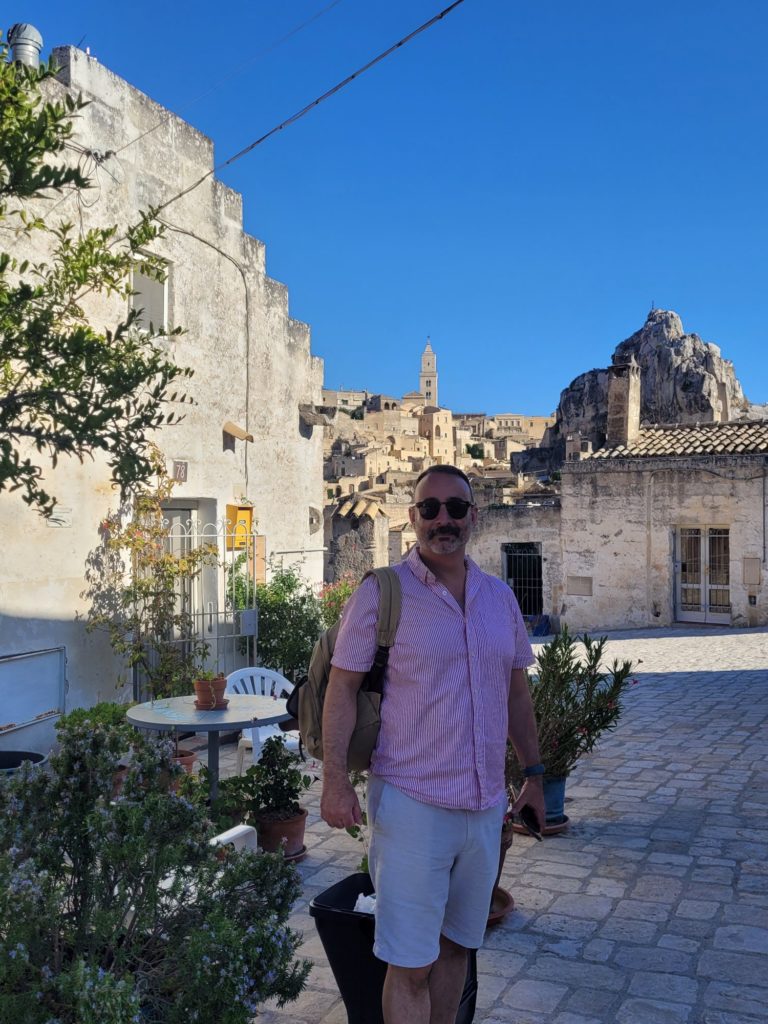
Anyone who has used public transport in Southern Italy will know it is a haphazard experience. The driver will be a character and will probably be wearing a gold identity bracelet, but he will get you there eventually. Chris and I are on the last bus to Matera and have half an hour to locate the (unmarked) stop and knock back a celebratory prosecco. We triumph with both, arriving in Matera just as it is getting dark and cosily atmospheric. (Disconcertingly, it also reeks of wildfire from the forests that were alight 15km away but let’s gloss over that for now).
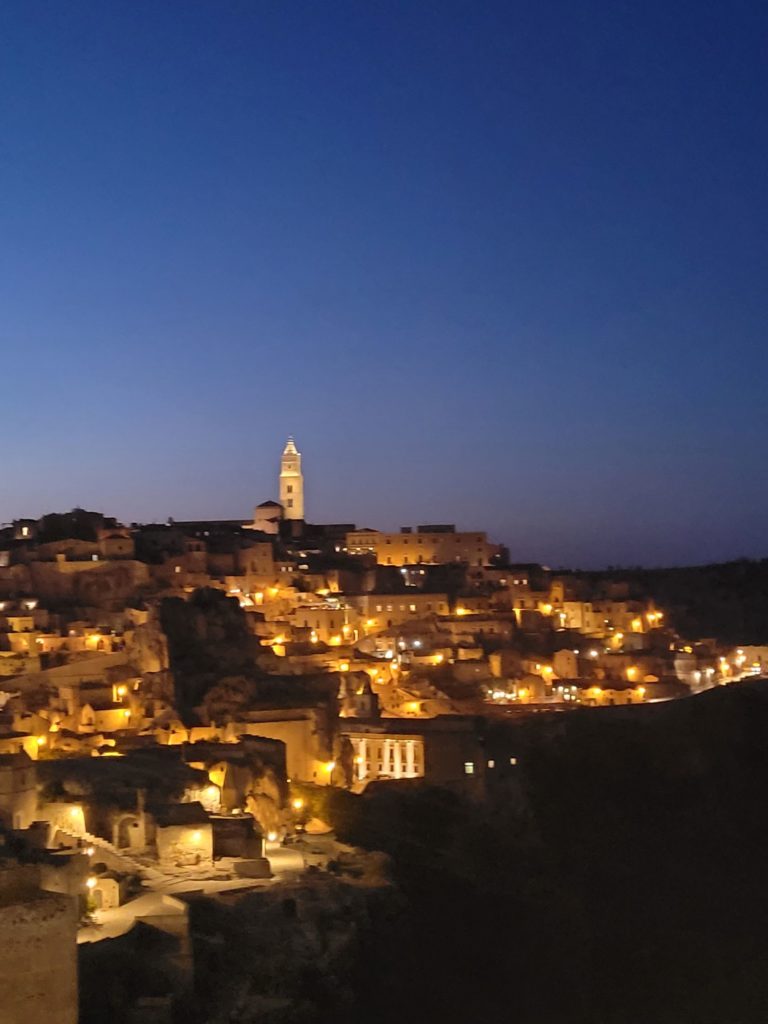
Much has been written about Matera as ‘the shame of Italy’ when the poverty was biblical, and the inhabitants were moved out of their cave-dwellings. This was in the 1950s and it is now a bougee place, attracting the Boden crowd and a lot of Australians who seem to have been released en masse across the boot of Italy.
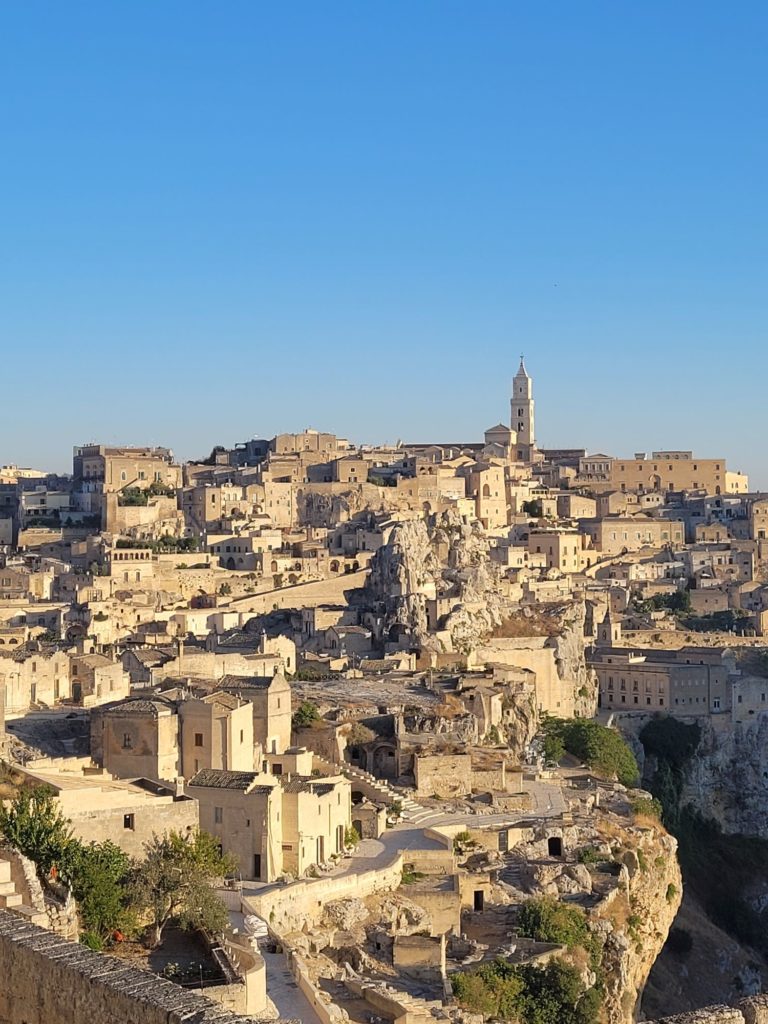
Like many Italian cities, it has an old and a new town that are markedly different. You might remember the old quarter, or Sassi as it’s known, as one of the backdrops in the last James Bond film, and whilst it is panoramically cinematic, most of all it is primordial. Matera is reputed to be the oldest inhabited city on earth dating back to palaeolithic times and you can feel this ancient heartbeat in every stone slab. Incidentally these stone slabs are like glass in places, so do not do what I did and try and navigate it in flip flops, unless you want a slalom type experience.
I will be discussing food at length here so let’s talk for a moment about cucina povera, the local style of cuisine. I realise I have been spoilt by Sicily where even a garage forecourt will serve you up a decent arancini, but I was disappointed by the food in Matera which ranged from dismal to middling. Our first night brings us one of the worst meals I’ve ever had in Italy (or anywhere else for that matter – and I eat anything apart from organs). The regional pasta is called orecchiette which means ‘little ears’ but I get something different served up on the wrong side of al dente with chickpeas and chunks of dried-up truffle, doused in olive oil. As a dish – and a restaurant – it’s all fur coat and no knickers, and I end up leaving most of it and gorging on breadsticks. Chris, who is a vegetarian, is captive to the questionable delights of pasta with turnip-tops which isn’t even fur coat but is ubiquitous in Puglia and Basilicata.
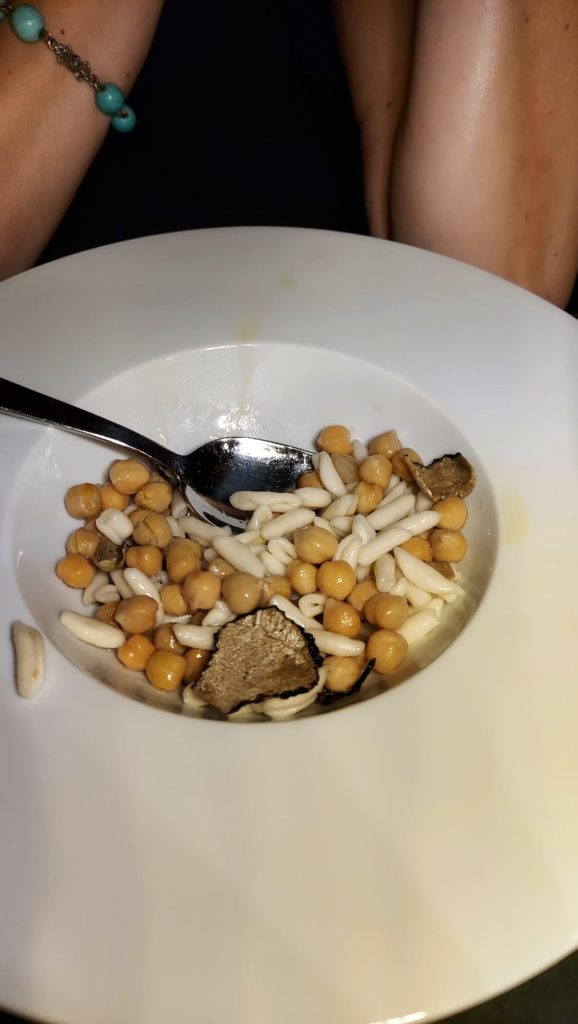
If you are staying in Matera, do take the advice of whomever is running your hotel on where best to eat and don’t be seduced by the twinkly lights in the seating area. It doesn’t guarantee quality or value for money. For the reasons above I won’t be making restaurant recommendations, but I will say stay at Il Belvedere where the staff are fantastically accommodating and the terrace views over (the delicious and expansive) breakfast are jaw-dropping.
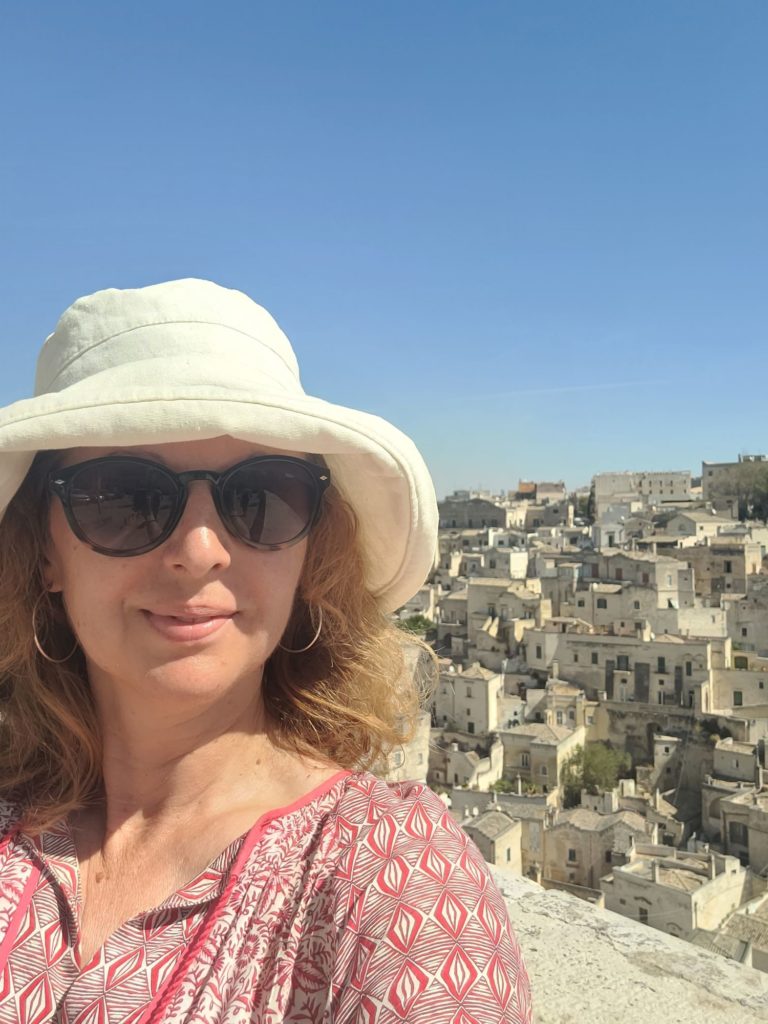
Our next stop is Polignano a Mare which I chose firstly because it was accessible by train from Bari, but more importantly because I have a photograph of Sophia Loren sitting on the iconic Lama Monachile beach (and where Sophia goes, I must follow). The reality is that whilst there are plenty of Instagram opportunities here, Polignano is really part Southwold, part Southend-on-Sea and, although wandering around the old town is delightful, the best thing about the famous beach is looking down on it.
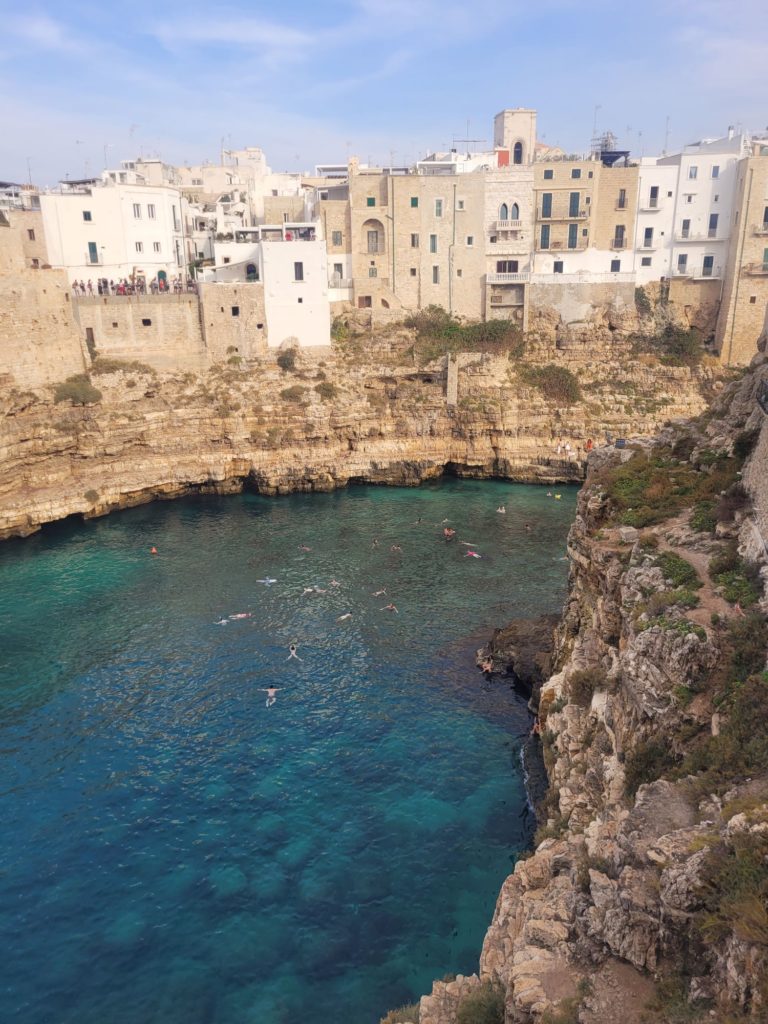
I say beach, it’s important to say you do not come to Polignano if you want a sandy stretch of coastline or a ritzy resort because it is really a collection of rocks. The water and the swimming, however, are wonderful and if you a sewage-swerving Brit, you’ll love the chance to get up early and sit with all the Nonnas who are taking their morning dip. Cross the bridge and turn left along the coast past the outstretched statue of Domenico Modugno – native of the town and writer of Italian earworm anthem Volare – and you’ll get to Lido Calla Paura. This is as good as it gets, and you can rent sunbeds and umbrellas and buy bottles of beer from cool boxes. We feel deathly pale against the deeply entrenched mahogany skin around us – another reminder that this is the end of the season – but one of the many great things about Italy is the lack of body shaming going on. Just eat your pasta and let it all hang out, tanned or not.
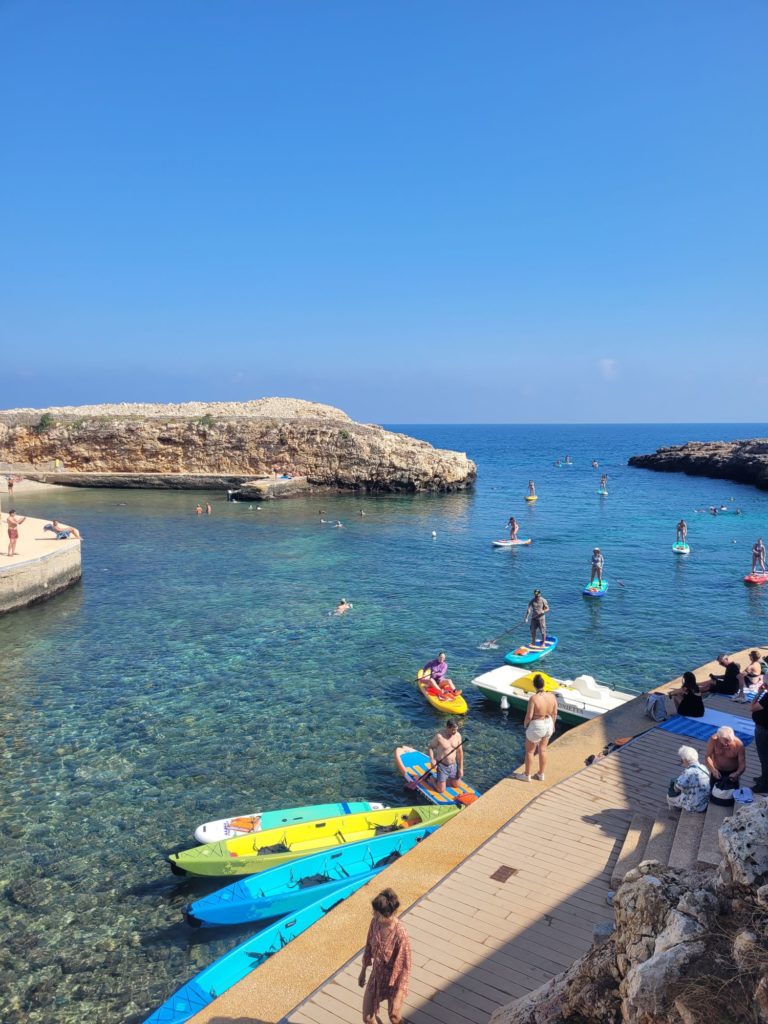
Back on the subject of food and the catering has mercifully improved. Caffe Dei Serfini in Piazza San Benedetto is great for breakfasts or an aperitivo and for an additional 5 euros per head you can sit with a friend on a tiny private balcony overlooking the sea. The best meal of the holiday is at pescatarian restaurant Mint Cucina Fresca in Via San Benedetto – the tenderest tuna steak and a pistachio parfait made by their pastry chef. The maître-de taps her finger to her head and signals the international gesture for crazy, as the Italian government cocks up the roll-out of the national emergency alerts by not co-ordinating the networks. This results in ear splitting sirens going off throughout the day on different phones, which could be heralding potential doom but isn’t. Love the Italians, but they are not renowned for their logistics.
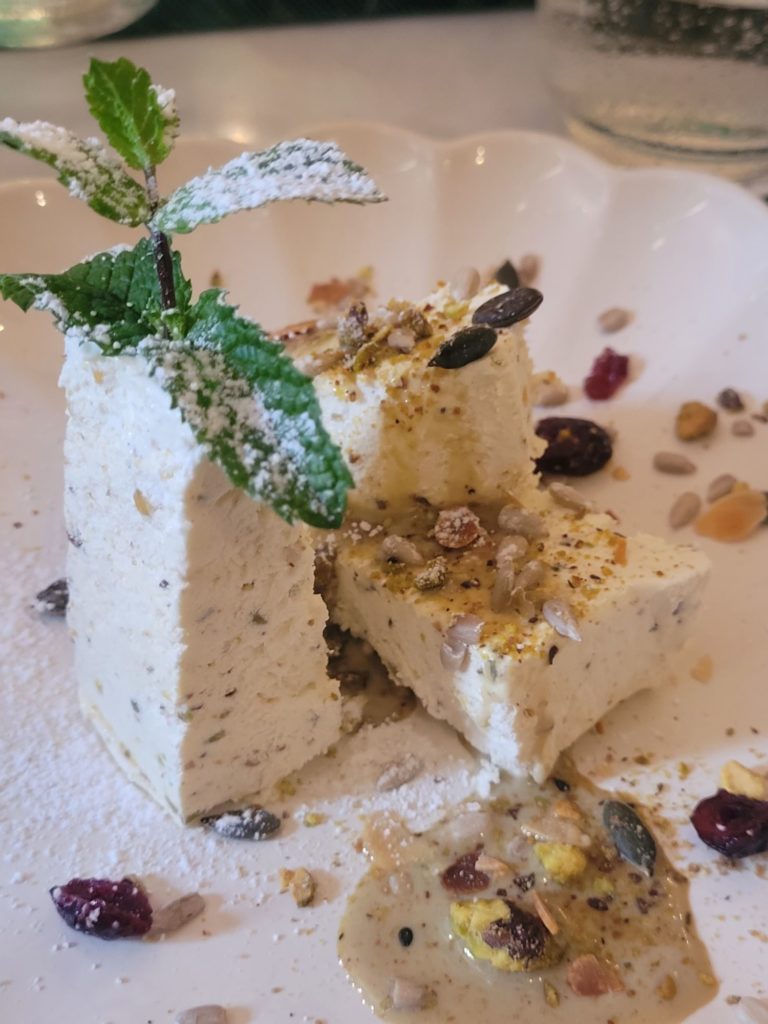
Chris needs to get back to London for work and I am heading further down the heel to Lecce in the Salento region. I’ve pre-booked my ticket on the TrenItalia App which is cheap and straightforward, and the journey is an easy hour and a half through miles of olive groves. I always love arriving in a baroque town just after lunch when everything is slightly sleepy and deserted. Lecce is reminiscent of towns in Southeast Sicily, and I’m staying in Azzurretta Guest House which is a 500-year-old palazzo in the heart of the historic centre, run by the effervescent Tullio, a former high-flyer, who decided to downsize and take on the home that had been in his family for over a century.
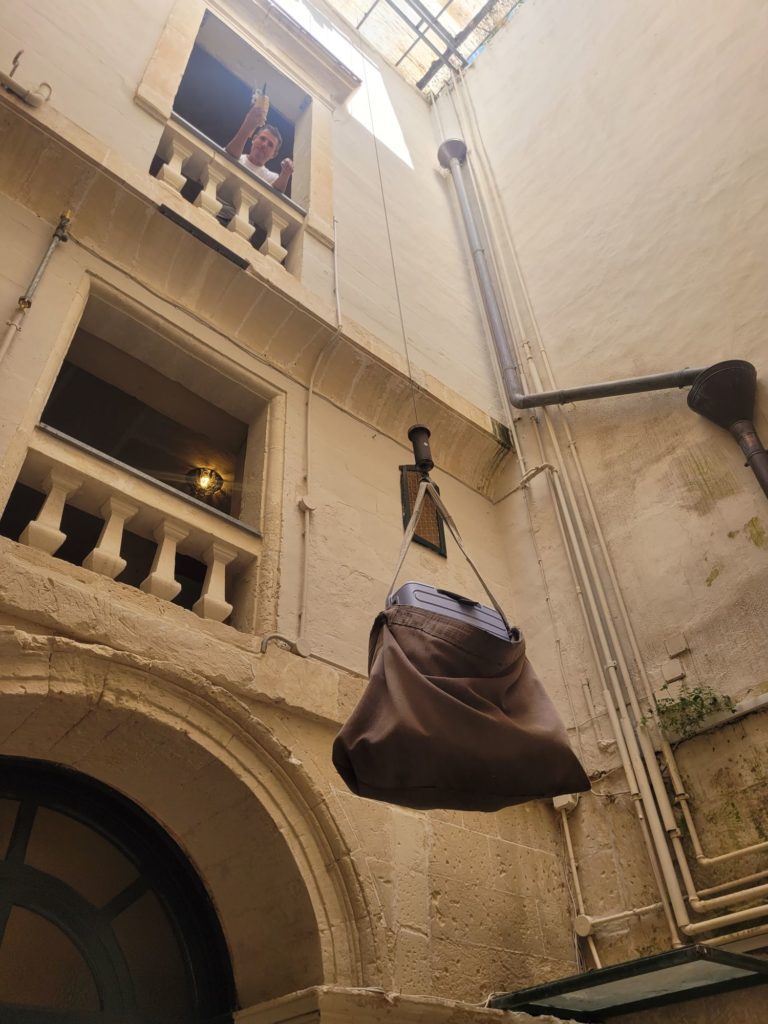
My first real understanding of just how old the place is, occurs when a makeshift winch comes down to take my case up to the second floor. If you stay here, book one of the vaulted rooms which are spacious and comfortable – the ensuites are a bit dated but everything works well, and you’re given a carafe of local wine on arrival which suits me as a welcome. There are four keys to get in and out of the various doors (‘this lock, it is 300 years old, you need to treat it gently’) but you’ll soon get your head around it. Most of all, Lecce feels safe with CCTV everywhere, so you can wander around at all hours without worrying about much, least of all getting lost which around here is a pleasure.
The best thing to do in Lecce first thing is to head to one of the cafes at any of the stunning city gates and watch the locals gesticulating wildly to each other. They’re probably just talking about what they’re buying at the supermarket later, but it looks like they’re telling elaborate tales designed to out-shock each other. Teenage couples cling to each other on vespas and men, who wouldn’t look out of place in a Scorsese movie, puff on small cigars and drink espresso. A boy turns up with his school bag and is immediately smothered with kisses on his chubby cheeks by everyone around the table, as if they’ve not seen him in months. It’s obvious one of them is his mother. The cliché it seems is real.
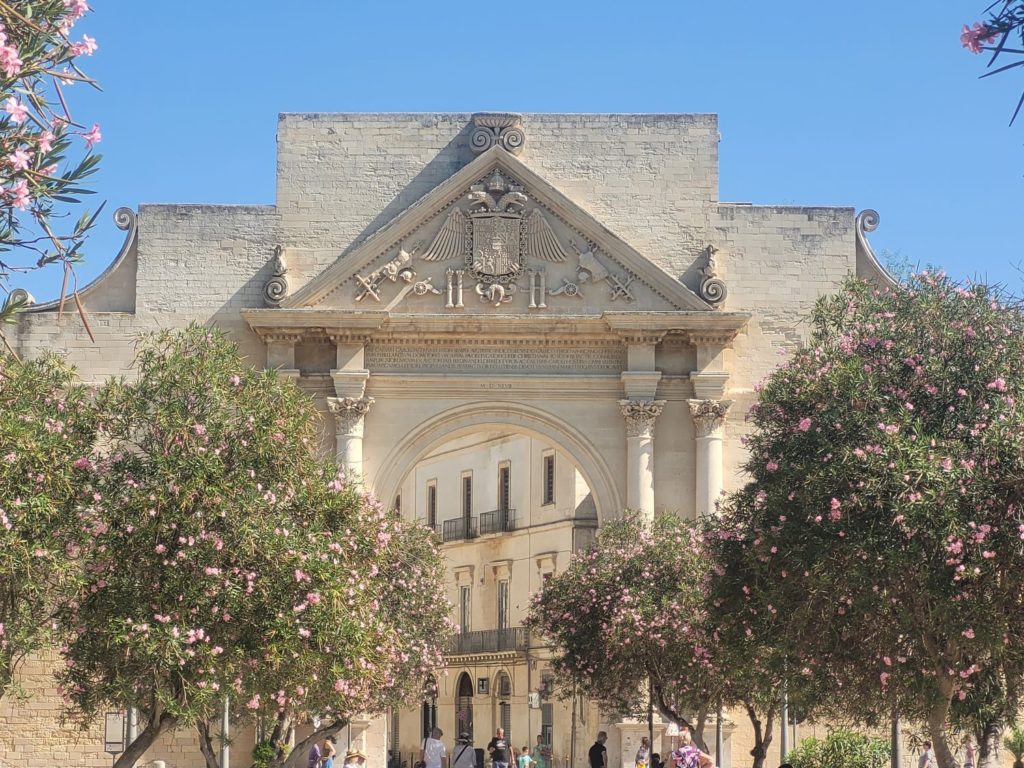
Like any baroque town, Lecce is awash with gloriously over the top churches, their towering facades carved with gargoyles and other mythical creatures. There are forty in total, and it’s worth paying 21 euros for entrance into the four most famous – Lecce Duomo Cathedral which sits on a piazza that might make you gasp for breath, Chiesa di Santa Chiara, Chiesa di San Matteo and the particularly frilly Basilica di Santa Croce. This ticket will also get you to the top of the campanile for incredible views across the city. No Saturday afternoon in Southern Italy is complete without a spangly wedding and I get to see mine sitting outside the Jewish Museum next to Basilica di Santa Croce, sipping on a spritz and blinded by sequins. And this is just the guests, who congregate and pose like movie stars for the tourists’ eager photographs.
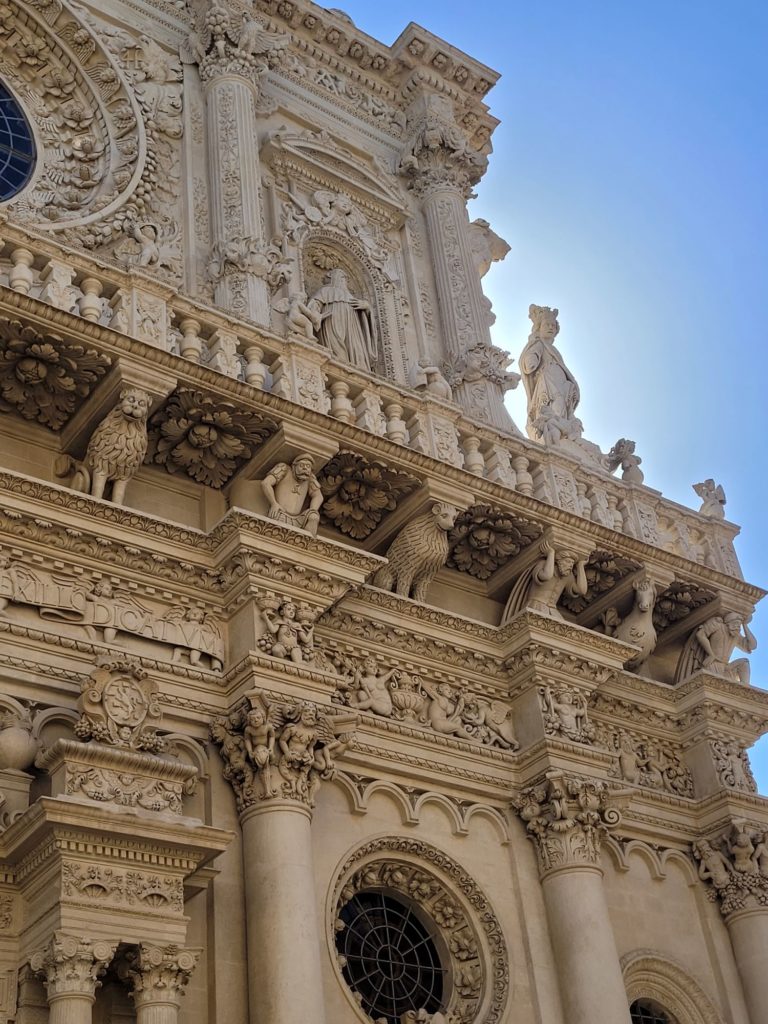
The floral Primitivos have so far outshone the food, but in Lecce everything I eat is amazing and I am now mainlining wheat and diary. Pizza and Co in Via Guiseppe Libertini sells the best pizza slices I’ve had anywhere (sorry Naples) and just across the street La Bottega Del Corso does delicious platters of local cheeses, olives and charcuterie if you’re into deli food. I particularly like Enogastronomia Povero which makes me vow to never eat our rubbery UK mozzarella again and as for the caramelised fig ice cream at Sensi Gelataria….it is outrageous. It’s hard to go wrong here. I order a basic bitch lasagne at local institution La Cucina Mamma Elvira and even this is masterly. I am rolling home to the rain.
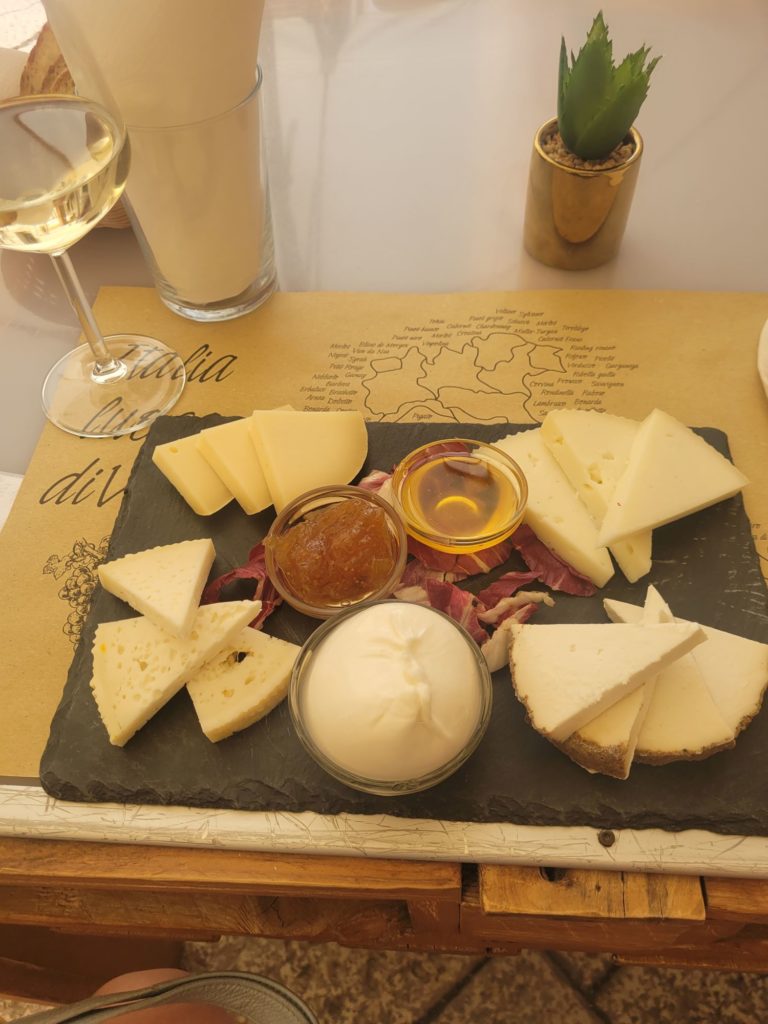
As an intro to this part of Italy, it’s whetted the appetite of this gourmand, but next time it’s a car and some sand for me. Looking at the map, train journeys are eccentric here and it can take three times longer to get somewhere that looks three times nearer. I did a day trip to Ostuni – a white pearl of a hillside town and must see – in just under 40 minutes on a fast intercity train bound for Bologna. However, getting to the closer coastal resort of Gallipoli remains something of a mission. Italy doesn’t always make sense, but I can’t stop coming back for more.
